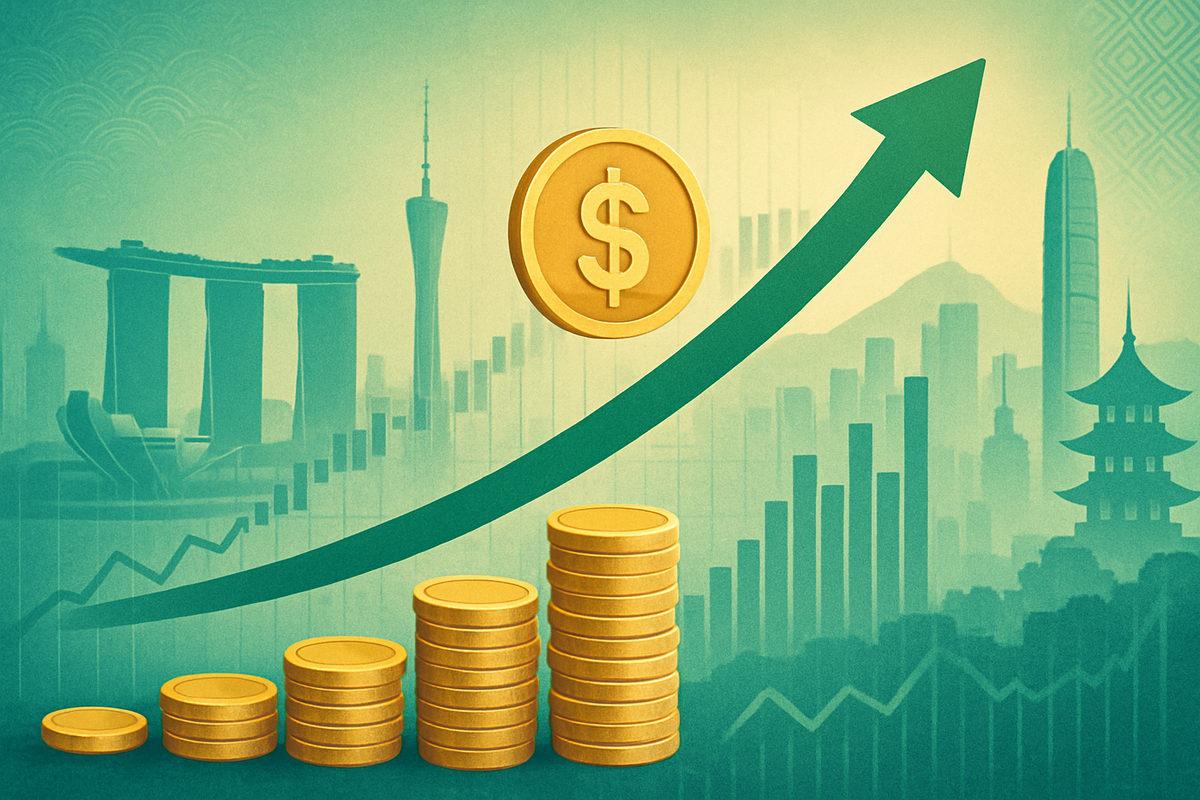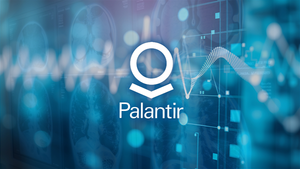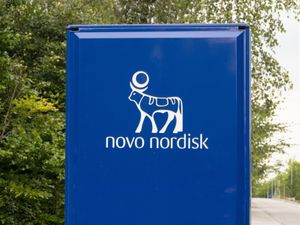Financial News
Voya Asia Pacific High Dividend Equity Income Fund (NYSE:IAE) Declares Consistent $0.065 Monthly Dividend Amidst Evolving Market Dynamics

New York, NY – October 15, 2025 – The Voya Asia Pacific High Dividend Equity Income Fund (NYSE: IAE) has reaffirmed its commitment to income-focused investors by declaring a consistent monthly dividend of $0.065 per share. This latest announcement, following a similar distribution for October, maintains the fund's attractive forward yield, which has hovered around 10.57% (as referenced in the initial query, with recent reports indicating 10.35% to 10.96%). While the October 2025 dividend was paid today, October 15, 2025, the fund has also announced its November 2025 dividend with an ex-dividend date of November 3, 2025, and a payment date of November 17, 2025, signaling continued stability in its payout schedule. This steady distribution, however, comes with a critical nuance: a significant portion of recent payouts has been classified as a return of capital, a detail that warrants closer examination by current and prospective shareholders.
The consistent dividend is a beacon for investors seeking regular cash flow, particularly in a market grappling with fluctuating growth prospects and evolving interest rate expectations. As a closed-end fund (CEF), IAE's appeal lies in its high distribution rate, which consistently outpaces many traditional income-generating assets. However, the reliance on return of capital for a substantial part of its distributions introduces a layer of complexity, prompting investors to scrutinize the fund's long-term sustainability and the health of its underlying net asset value (NAV).
Detailed Coverage: IAE's Dividend Strategy and Market Context
Voya Asia Pacific High Dividend Equity Income Fund (NYSE: IAE), managed by Voya Investment Management, a subsidiary of Voya Financial, Inc. (NYSE: VOYA), has maintained a monthly dividend of $0.065 per share throughout 2025. This monthly payout schedule represents a strategic shift from its previous quarterly distributions, which saw a significant increase to $0.065 per share in April 2024 from $0.053. The move to monthly payments underscores the fund's objective to provide a steady income stream to shareholders.
The fund's investment objective is to achieve total return through current income, capital gains, and capital appreciation, primarily by investing in dividend-yielding equity securities of companies located in the Asia Pacific region (excluding Japan). It also employs an options overlay strategy, selling call options on selected indices or equity securities to enhance returns. Key players involved include fund managers Justin Montminy and Susanna Jacob, alongside President and CEO Christian G. Wilson.
While the dividend consistency is a strong selling point, the composition of these distributions is a critical factor. For the October 2025 dividend, an estimated 76.0% was attributed to return of capital, with only 24.0% stemming from net investment income. This high proportion of return of capital, while not always detrimental, can raise concerns about the fund's ability to generate sufficient income and capital gains from its portfolio to cover distributions, potentially leading to NAV erosion over time. Initial market reactions, beyond price movements, have included analytical commentary questioning the sustainability of such a high yield, particularly if it's not fully supported by the fund's earnings.
Impact on Companies and Funds: Winners, Losers, and IAE's Position
The consistent dividend strategy of Voya Asia Pacific High Dividend Equity Income Fund (NYSE: IAE) creates a dynamic environment for its underlying holdings and the broader high-dividend fund landscape.
Companies that are part of IAE's portfolio, particularly those with robust dividend-paying track records and strong fundamentals in the Asia Pacific region, are the primary beneficiaries. IAE's investment strategy, which considers factors like liquidity, dividend yield, cash flow strength, and capital structure, favors financially sound companies. Consistent buying pressure from IAE can provide valuation support and increased visibility for these Asia Pacific (ex-Japan) companies among income-focused investors, potentially attracting broader interest. The Asia Pacific region, known for generally higher dividend yields, boasts companies with solid corporate fundamentals, strong balance sheets, and healthy cash reserves, making them attractive targets for IAE's mandate.
Conversely, companies that do not pay dividends, offer low dividends, or prioritize reinvesting earnings for growth over distributions would naturally be overlooked by IAE. Similarly, companies outside the fund's geographic mandate or those with unstable fundamentals, even if they currently pay a dividend, would likely not be considered. These companies "lose out" on potential investment and the associated valuation support from IAE.
For IAE itself, the consistent high dividend is a significant draw for income-seeking investors, potentially supporting demand for its shares and influencing its trading discount or premium to Net Asset Value (NAV). As of October 9, 2025, IAE was trading at a -10.66% discount to its NAV. However, the major challenge remains the sustainability of its high distribution, particularly the reliance on return of capital. If total returns do not cover distributions, it can lead to NAV erosion and potentially necessitate future dividend cuts. The fund's use of leverage and an options strategy, while designed to enhance returns, also introduces additional layers of risk.
The impact extends to other high-dividend closed-end funds (CEFs), especially those focused on the Asia Pacific region. IAE's attractive yield creates competition, potentially pressuring peers to offer comparable yields or demonstrate superior total returns. IAE's performance can also serve as a benchmark, influencing investor sentiment towards the broader category. All high-dividend CEFs share similar challenges regarding distribution sustainability, the risk of trading at discounts, and the impact of interest rate changes on leverage costs, making IAE's situation a relevant case study for the entire sector.
Wider Significance: Industry Trends, Ripple Effects, and Regulatory Scrutiny
The consistent high dividend from Voya Asia Pacific High Dividend Equity Income Fund (NYSE: IAE) holds broader significance within the financial landscape, reflecting and influencing several key trends.
Firstly, it underscores the persistent investor appetite for income, especially from CEFs, which often offer yields significantly higher than traditional equity funds. In a market where interest rates have seen some cuts (the Federal Reserve cut rates in September 2025, with more expected), high-dividend strategies become even more attractive compared to lower-yielding fixed-income alternatives. This trend is reinforced by the Morningstar Dividend Leaders Index outperforming the broader market in 2025, signaling a renewed interest in defensive, income-rich areas. The specific focus on Asia Pacific dividends aligns with the region's strong case for offering stability and potential for "dividend surprises" amidst global uncertainties, driven by improving corporate governance and shareholder return focus in countries like China, Korea, Singapore, and Taiwan.
Secondly, IAE's strategy can create ripple effects across the competitive landscape. Its consistent payouts could pressure other Asia Pacific-focused CEFs and high-dividend funds to match its distribution, potentially leading to adjustments in their own strategies, including leverage or options usage. Strong performance from IAE could also attract more capital to Voya Investment Management's (NYSE: VOYA) CEF offerings and the broader Asia Pacific equity CEF space. However, it also invites increased scrutiny from competitors and analysts regarding the sustainability of its dividend, particularly the reliance on return of capital.
Thirdly, funds offering exceptionally high yields, especially those employing leverage and complex derivatives like options, invariably draw regulatory attention. The Securities and Exchange Commission (SEC) is likely to intensify its oversight on such products, focusing on investor disclosure, suitability, and the accurate representation of risks. Policy debates around enhanced transparency, investor education requirements, and potential restrictions on certain derivatives for retail investors could emerge, especially if market downturns expose misunderstandings or significant losses. Regulators also emphasize clear disclosure of dividend sources to ensure investors understand whether distributions stem from net investment income, capital gains, or return of capital.
Historically, high-dividend strategies have demonstrated resilience, often outperforming during market corrections. However, the sustainability of high dividends has always been a key concern, with past instances of funds cutting dividends due to unsustainable payout ratios serving as cautionary tales. The current market environment as of October 15, 2025, characterized by anticipated interest rate cuts, stable inflation (though potentially peaking in the US), and ongoing geopolitical tensions, provides a complex backdrop. While global equity markets climb, buoyed by rate cut expectations and AI enthusiasm, the underlying health of high-yield strategies like IAE's remains paramount.
What Comes Next: Navigating Opportunities and Challenges
The path forward for Voya Asia Pacific High Dividend Equity Income Fund (NYSE: IAE) and its investors is characterized by both promising opportunities and significant challenges, particularly concerning the sustainability of its high dividend.
In the short term, IAE's consistent monthly dividend will likely continue to attract income-focused investors, especially given the current global investor optimism and expectations of further central bank rate cuts. However, the high proportion of return of capital (RoC) in its distributions demands immediate attention. If the fund's Net Asset Value (NAV) does not grow sufficiently to offset this RoC, it could lead to NAV erosion, potentially increasing the fund's discount to NAV if investor confidence wanes. Investors must closely monitor IAE's NAV performance relative to its distributions.
Long-term, the sustainability of IAE's dividend is paramount. A persistent reliance on RoC, where distributions are not fully covered by underlying investment income and realized capital gains, could lead to a decline in NAV and impair the fund's future earnings power, eventually necessitating a dividend cut. Conversely, the broader Asia Pacific market offers promising long-term trends, with expectations of earnings and dividend growth driven by strengthening domestic demand, intra-regional trade, and policy stimulus in China. Improved corporate governance and a focus on shareholder returns in countries like Korea could provide IAE with opportunities to generate more sustainable income and capital appreciation.
Strategic pivots or adaptations from Voya Investment Management (NYSE: VOYA) may be required. The most direct approach would be to re-evaluate the distribution policy, potentially adjusting the dividend to a more sustainable level. Optimizing the options overlay strategy and refining investment selection towards companies with stronger, more predictable dividend growth and robust balance sheets within the Asia Pacific region could also enhance income generation. Increased transparency regarding the sources and nature of the RoC would also be crucial for maintaining investor confidence.
Market opportunities for IAE and the broader high-dividend Asia Pacific equity space include attractive valuations in Asia ex-Japan, anticipated earnings and dividend growth in the region (especially Australia, India, and Singapore), and sector-specific growth in areas like AI-related technology in Taiwan and Korea, and banking in India. The increasing emphasis on shareholder returns by Asian governments and companies, coupled with a potentially lower interest rate environment, could further boost these investments.
However, challenges loom large. Elevated geopolitical tensions, particularly between the US and China, along with potential US tariffs, could introduce significant market volatility. Fluctuations in global demand and persistent inflation (despite recent easing) also pose risks. The sustainability of China's economic recovery remains a critical factor. For CEFs, specific risks include trading at a discount to NAV, magnified volatility due to leverage, and the persistent concern of dividend payments being sourced from capital rather than income or gains.
Potential scenarios and outcomes for IAE's dividend strategy range from a dividend cut/adjustment to preserve NAV, which could initially cause a price dip but lead to long-term stability; to a sustained dividend with NAV erosion, where investors receive high payouts but their capital base shrinks; to a successful pivot and dividend sustainability improvement, driven by effective management and a favorable market, leading to increased investor confidence and capital appreciation. A less favorable scenario involves market headwinds exacerbating RoC reliance, leading to significant capital erosion and potentially a deeper dividend cut.
Comprehensive Wrap-up: Navigating the High-Yield Landscape
The Voya Asia Pacific High Dividend Equity Income Fund (NYSE: IAE)'s consistent $0.065 monthly dividend, offering a forward yield in excess of 10%, serves as a compelling proposition for income-seeking investors in a dynamic market. This steadfast payout, however, is significantly underpinned by a high proportion of return of capital, a key takeaway that necessitates careful consideration from investors. While IAE provides attractive monthly cash flow and geographical diversification into the growing Asia Pacific markets, the long-term sustainability of its distribution, absent sufficient underlying income and capital gains, remains a central concern.
Moving forward, the market presents a complex tapestry for IAE. The Asia Pacific region offers promising growth prospects, driven by strong domestic demand, improving corporate governance, and potential policy stimuli, particularly in countries like India and China. Globally, the continued demand for income, especially in an environment of easing monetary policy, supports the high-dividend strategy. However, geopolitical tensions, global demand fluctuations, and the inherent risks of leveraged closed-end funds, coupled with the reliance on return of capital, pose significant challenges.
The lasting impact of IAE's dividend strategy hinges on its ability to transition towards a more sustainable income generation model. If the fund can leverage the opportunities in the Asia Pacific market to generate higher net investment income and capital gains, it could solidify its position as a reliable high-yield vehicle. Conversely, continued heavy reliance on return of capital risks eroding its NAV, ultimately diminishing its total return potential and potentially necessitating future dividend adjustments.
What investors should watch for in the coming months:
- Dividend Composition: Closely monitor future dividend declarations for changes in the proportion of net investment income versus return of capital. A decreasing reliance on RoC would be a positive sign.
- Net Asset Value (NAV) Performance: Track IAE's NAV. A declining NAV, especially alongside high RoC, indicates capital erosion.
- Asia Pacific Economic & Geopolitical Developments: Stay informed about economic growth, inflation, and central bank policies in key Asia Pacific markets, as well as broader geopolitical shifts that could impact the fund's holdings.
- Voya Investment Management's Commentary: Pay attention to any statements from Voya Financial, Inc. (NYSE: VOYA) regarding IAE's strategy, performance, or outlook.
- Global Interest Rate Environment: While some Asian central banks are easing, global interest rate trends, particularly from the U.S. Federal Reserve, will influence capital flows and the relative attractiveness of high-yield investments.
By diligently monitoring these aspects, investors can better assess the ongoing viability and attractiveness of IAE's high-dividend income strategy within the evolving global market landscape.
This content is intended for informational purposes only and is not financial advice
More News
View More




Quotes delayed at least 20 minutes.
By accessing this page, you agree to the following
Privacy Policy and Terms Of Service.




